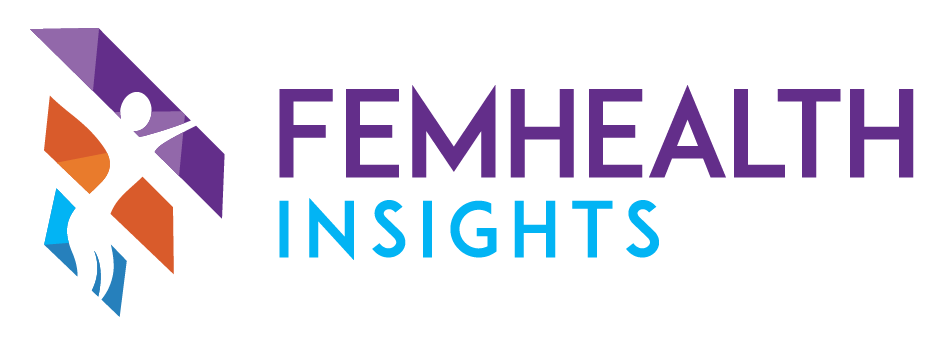Summarizing President Biden’s Executive Order on Women’s Health
Written by Megan Fuller, Chief Operating Officer, FemHealth Insights
Working in women’s health, it’s impossible to have missed this week's big news story. President Biden has issued a new executive order, aimed at enhancing and expanding the scope of women's health research across the nation. This comprehensive initiative marks a significant leap forward in addressing the historically underrepresented field of women's health in medical research and innovation. For professionals in the women's health industry, understanding the key components of this announcement is crucial for navigating the upcoming changes and opportunities it presents.
Funding and Initiatives
Central to the initiative is President Biden's call on Congress to allocate an investment of $12 billion specifically for women's health research. This funding is earmarked for several pivotal projects and advancements, including:
Creating a Fund for Women’s Health Research at the National Institutes of Health (NIH)
Advancing a cutting-edge, interdisciplinary research agenda
Establishing a nationwide network of research centers, to serve as the national gold standard for women’s health research across the lifespan
The Executive Order is the most comprehensive set of executive actions ever taken by the US Government to improve and expand on women’s health research, and has a number of aims and objectives.
Integration Across the Federal Research Portfolio
The executive order includes directives for constituent agencies to enhance research and data standards relating to women's health. It builds on the NIH policy to integrate women's health considerations throughout study design and in data collection and analysis processes, and it will include ensuring women's health is accounted for at every step, from grant applications to project reporting. This is intended to prioritize women's health research at all levels.
Prioritizing Research Investment
The order also encourages innovation through ARPA-H (Advanced Research Projects Agency for Health) and other multi-agency initiatives, such as the Small Business Innovation Research Program and the Small Business Technology Transfer Program. It also tasks the Department of Health and Human Services (HHS) and the National Science Foundation (NSF) with exploring ways to leverage artificial intelligence to advance women's health.
Galvanizing Research with a Focus on Midlife
A significant focus of the initiative is on women’s midlife health, directing the HHS to expand data collection efforts, launch a comprehensive research agenda, and improve clinical care and resources related to menopause management. Similarly, the Department of Defense (DoD) and the Department of Veterans Affairs (VA) are directed to enhance research and treatment concerning menopause for servicewomen and veterans.
Assessing Unmet Needs
The executive order also tasks agencies to lead a robust effort to assess gaps in federal funding for women's health research, and identify necessary statutory, regulatory, and budgetary changes to support women's health research across the federal government. Agencies will also be required to report annually on their investments in women's health research, and on their progress in their efforts to enhance women's health.
Agency Commitments
Alongside the Executive Order, federal agencies - such as the HHS, DoD, VA, and NSF - also announced new actions and commitments as part of their ongoing efforts through the White House Initiative on Women’s Health Research. Notably, these include:
The launch of an NIH-wide effort directing investments of $200 million in 2025, acting as a first step towards the Central Fund on Women's Health Research.
A call for new multidisciplinary research and education proposals, which will be accepted on an ongoing basis.
The creation of a dedicated, ‘one-stop-shop’ for NIH funding opportunities in women’s health. This centralized resource aims to simplify the process for researchers seeking funding, eliminating the need to navigate through 27 different NIH institutes.
Political Context
Amidst the big announcements and commitments, it's important to consider the broader political and strategic context of these actions. Whilst such comprehensive measures introduced by President Biden address long-standing gaps in women's health research, they also position the Biden administration favorably in the eyes of a key demographic - women voters - as the US approaches the next presidential election. By prioritizing issues that directly impact a significant portion of the population, the Biden administration may be seen as taking tangible steps to advocate for women's health and rights - particularly in a post-Roe vs. Wade era - but it could also be interpreted as a strategic effort to garner support and secure votes from women.
This clearly highlights the critical intersection of healthcare policy, reproductive rights, and electoral politics, with such initiatives underscoring the administration's recognition of the importance of women's health issues not just from a medical or social perspective, but also as a pivotal element in the political landscape. At FemHealth Insights, we sincerely hope that should President Biden be successful in gaining a second term in Office, that these ambitious promises will be transformed into substantive action.
Conclusion
The suite of actions announced in the Executive Order build on the ARPA-H Sprint for Women’s Health recently announced by First Lady Dr. Jill Biden, and demonstrate the administration's commitment to advancing women's health research and innovation. For industry professionals, these developments signal a new era of heightened focus, funding, and resources dedicated to women's health, offering numerous opportunities for advancement, collaboration, and innovation in the field. As the most comprehensive set of executive actions ever taken by the US to improve and expand women’s health research, this initiative promises to transform the landscape of women's health for generations to come.
About the Author:
Megan Fuller is Chief Operating Officer at FemHealth Insights. Megan is passionate about breaking stigmas, removing barriers to access, and bridging gender gaps. She believes firmly that improving education will improve healthcare for both current and future generations.


